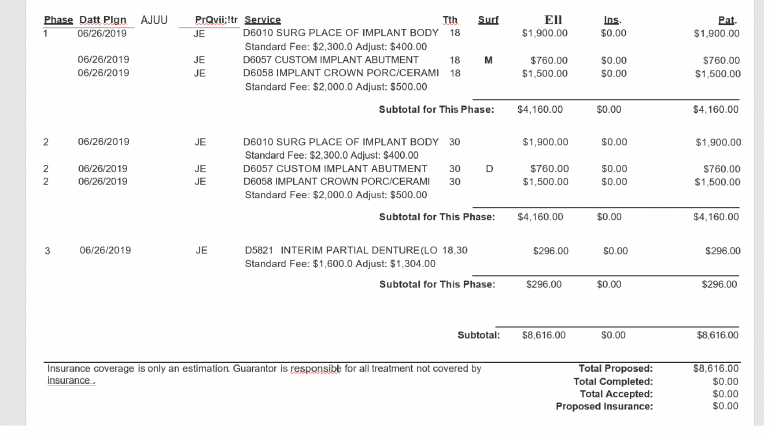
Dental Code D4921: Gingival irrigation – per quadrant
Dental Code D4921, also known as Gingival Irrigation – Per Quadrant, is a dental procedure aimed at improving oral health by thoroughly cleaning and irrigating the gum tissues within a specific quadrant of the mouth. This code specifically refers to the irrigation of gum tissues within a single quadrant, which is one section of the patient's mouth divided by an imaginary line that runs from the midline of the upper and lower jaws. Gingival irrigation is an effective method to remove debris, bacteria, and toxins from the gums, promoting gum health and preventing gum diseases.
Assessment and Preparation
Before performing gingival irrigation, the dentist will conduct a thorough examination of the gums and overall oral health. This evaluation helps identify the areas of concern, such as gum inflammation or deep gum pockets, and determine the need for gingival irrigation. The dentist will explain the procedure to the patient, addressing any questions or concerns the patient may have, and discuss the benefits and potential risks associated with it.
Anesthesia (only if necessary, not always included)
Depending on the sensitivity of the gums and the comfort level, the dentist may administer local anesthesia to numb the area before the procedure. Local anesthesia helps ensure a pain-free experience during the treatment. The dentist will apply a numbing gel to the gum tissues or inject a local anesthetic near the site to be treated, ensuring comfort throughout the process.
Plaque and Tartar Removal
To prepare the gum tissues for irrigation, your dentist will use specialized dental instruments, such as scalers and curettes, to remove plaque and tartar buildup from the teeth and gum line. Plaque is a sticky film of bacteria that forms on the teeth, while tartar is hardened plaque that cannot be removed through regular brushing and flossing. This step is crucial to create a clean surface for effective irrigation.
Your dentist will carefully scrape the plaque and tartar from the tooth surfaces, including below the gumline. This process, known as scaling, helps eliminate the bacterial accumulation that can contribute to gum disease and inflammation. By effectively removing the plaque and tartar, your dentist prepares the gum tissues for the subsequent irrigation step.
Gingival Irrigation
Once the teeth and gumline are free from plaque and tartar, the actual gingival irrigation process begins. Your dentist will use a specialized device called an oral irrigator or a syringe with a fine needle to deliver an antimicrobial or medicated solution into the gum pockets and along the gumline.
The irrigation solution is usually a combination of water and an antimicrobial agent, such as chlorhexidine or an antibiotic. The antimicrobial solution helps eliminate bacteria, reduce inflammation, and promote healing. The delivery of the solution is done gently to avoid any discomfort.
The dentist will aim the irrigation device directly into the gum pockets, which are the spaces between the teeth and gums. By directing the solution into these pockets, the dentist effectively flushes out any accumulated plaque, food particles, and bacteria. The solution acts as a cleansing agent, removing debris and toxins from the gum tissues, reducing inflammation, and promoting healing.
Post-Irrigation Care
After gingival irrigation, your dentist may provide additional recommendations to optimize the healing process and maintain oral hygiene. This may include instructions for proper brushing and flossing techniques, the use of antibacterial mouthwashes, or the application of topical gels or creams to promote gum healing.
The dentist may also advise scheduling regular follow-up appointments to monitor the condition of the gums and ensure the effectiveness of the irrigation treatment. It's important to adhere to these recommendations and maintain good oral hygiene practices to prevent the recurrence of gum problems.
Summary of Dental Code D4921: Gingival irrigation – per quadrant
Dental Code D4921, Gingival Irrigation – Per Quadrant, involves cleaning and irrigating the gum tissues within a specific quadrant of the mouth. This procedure helps remove debris, bacteria, and toxins from the gums, promoting gum health and preventing gum diseases. The steps involved in gingival irrigation include assessment and preparation, anesthesia (if necessary), plaque and tartar removal, gingival irrigation using an antimicrobial solution, and post-irrigation care.
Gingival irrigation is a valuable tool in maintaining optimal oral health, especially for individuals prone to gum diseases. By effectively cleansing the gum tissues, this procedure supports the healing process, reduces inflammation, and promotes healthy gums. Regular dental check-ups, professional cleanings, and appropriate treatments, including gingival irrigation when necessary, are essential for achieving and maintaining optimum oral health. It's important to consult your dentist to determine if gingival irrigation is suitable for your specific dental needs and to address any concerns or questions you may have.
Say hello to a budget-friendly smile with
Dr. BestPrice! Compare costs, make wise choices, and unlock the key to savings.